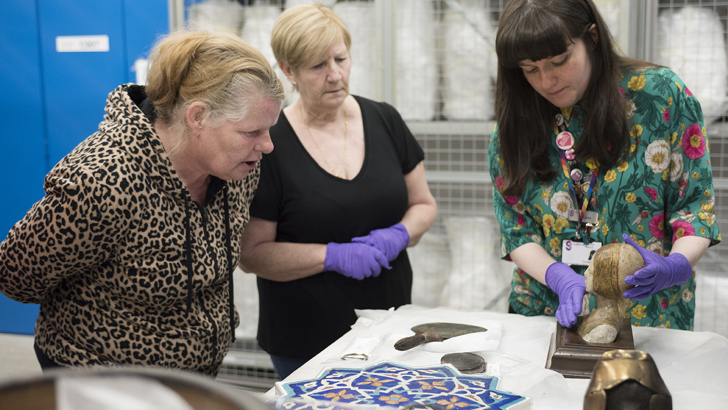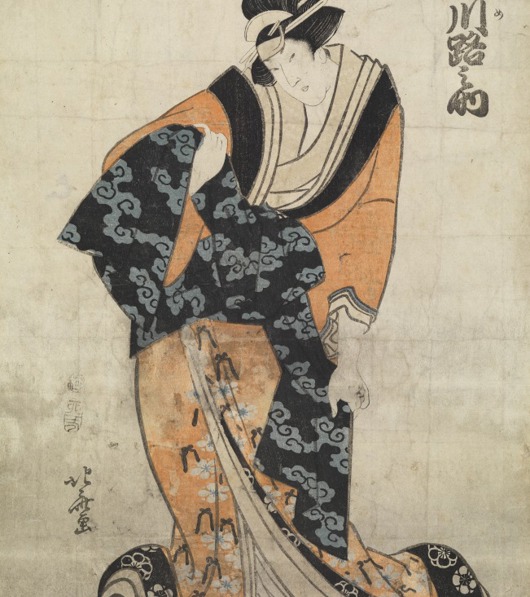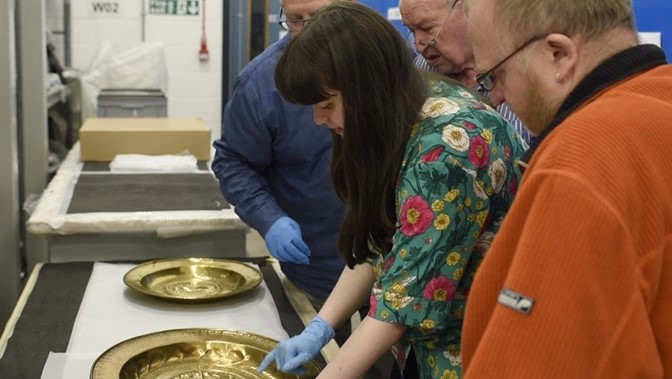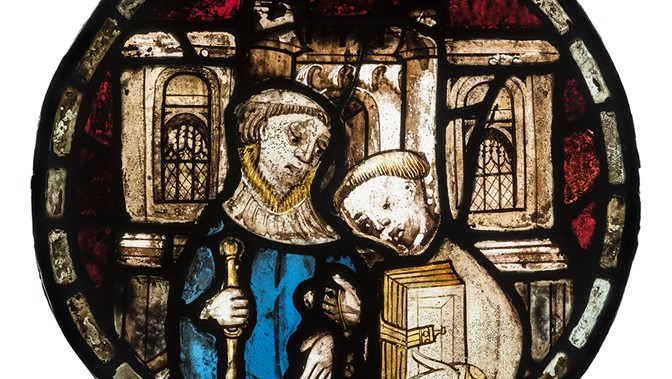Discovering LGBT histories at The Burrell

To mark the end of LGBT History Month, Project Curator Laura Bauld tells us how the team went about researching LGBT histories in The Collection, as part of the redisplay project.
'In the past, and even today, people who experience same-sex love or gender diversity have faced intense social stigma and discrimination. Museums around the world have often hidden the LGBT (Lesbian, Gay, Bisexual, Transgender) histories and stories of the objects in their collections. However, the Burrell Project recognises that objects should be used to tell diverse histories, especially of those communities that have been marginalised by museums and society. When The Burrell Project began in 2016 it took an early active stance; we would represent LGBT histories as part of the re-display.
At the start, there were no objects in the collection known to The Burrell team that had an LGBT story. The Burrell, in many ways, was a heteronormative space and collection. But it was reckoned that there must be some, somewhere, in our 9,000-object collection. As long as there has been humans on this earth, there has been people who have experienced same-sex love or gender diversity, so those histories had to be present in our collection. It was just a matter of finding them.
Over a period of six months nearly every object in the collection was combed through for any connections to LGBT histories. And from a starting point of zero LGBT objects, we found around 300 that could be used to tell our visitors about LGBT history.
The objects revealed LGBT histories and experiences from both ancient and modern times. An Ancient Greek sculpture in the collection is thought to be the fertility god/goddess, Cybele; in their legend, they were born with both male and female sexual organs, allowing us to explore intersex histories.


There is a colourful Japanese woodblock print of kabuki actor, Segawa Michinosuke I (1782–1812), dressed in an orange and black kimono. They look like a beautiful courtesan but in fact they are an 'onnagata', a male actor that only performed female roles.
Then there is the 1920 Jacob Epstein sculpture of the singer, Lilian Shelley (1892–after 1933), who during the 1910s regularly performed in the London night club, The Cave of the Golden Calf, arguably Britain’s first gay club.
The project team prioritised the telling of these histories in the new displays for The Burrell Collection. But we also recognised that to tell the stories of LGBT experiences, we had to do it with the community they represent; ‘nothing about us, without us.’ The Burrell Project actively consulted with the LGBT community in Glasgow, inviting LGBT community groups to co-curate LGBT history displays for the new galleries. These groups researched our objects and graciously brought their lived experience to the understanding of them. They have created poignant and compassionate interpretation that makes these LGBT histories visible.
We pride ourselves that the physical Burrell building will also be a safe space for LGBT individuals. In addition to the use of gender inclusive language across the museum displays, there will be gender neutral toilets and plans to implement LGBT awareness training for all staff. When The Burrell opens its doors, it will become a place where LGBT histories are celebrated and commemorated, and the community is welcomed, accepted, and respected.'
Laura Bauld
Project Curator
The Burrell Collection
Images
Header:
Laura (on right) with members of a local community group, viewing objects from The Burrell Collection currently in storage at Glasgow Museums Resource Centre (GMRC).
In text:
Detail from colour woodblock print of kabuki actor Segawa Michinosuke (1782-1812), Japan, 1807.
Clay figure of Cybele, also known as Agdistis, Greece, circa 350 BC.

